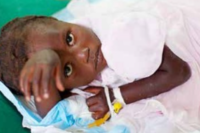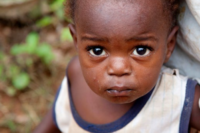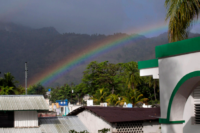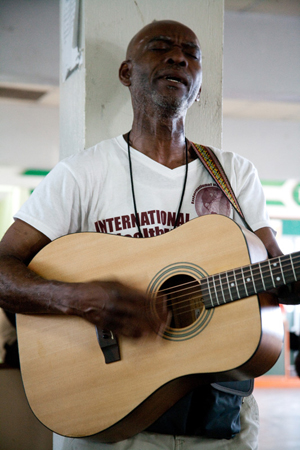 By Amanda MacFarland
By Amanda MacFarland
A simple stroll down any street in Haiti will fill your ears with music. Hip Hop songs blast from passing cars, spiritual hymns echo from churches, harmonic choruses ring from the vocal chords of Haitians tending to laundry, and melodies of all kinds are recited by joyful dancing children. Music is a part of everyday life in Haiti.
Haitian music is vibrant, danceable, and most often religious or politically charged. Because of the country’s location in the Caribbean as well as the rich history of the isle of Hispaniola, Haiti’s music has French, African, native Taino, and even Spanish influences. Though the styles, melodies and tastes of the Haitian listeners have changed throughout the years, the vibrant spirit of music is embedded into the country.
Religious Music in Haiti
In 1804, the Haitian people revolted against slavery and the Republic of Haiti was founded. Haitians had their roots in Africa, and music of Haiti at that time was linked to the Vodoun Religion. The musical style of Vodoun can be described as heavy drumming, spiritual dancing and chanting, and this is the basis for the music that has been radiating from Haiti ever since.
By the early 1900’s, as Western Cultures began influencing Haiti, the Catholic religion began growing throughout the country. Blues, Jazz, and even French music began mixing with the tribal melodies creating whole new styles of music, unique to Haiti. Today, religious music in Haiti can be either in the style of Vodoun, Catholic, or even a mixture of the two.
Today, Haiti celebrates many religious holidays that are associated with music. Among these religious holidays is a week long festival beginning Ash Wednesday and ending on Easter, called Rara. The music of Rara is very lively, and traditionally, musicians will play maracas, bells, and trumpets made of bamboo or metal pipes, called vaksen. Modern Rara musicians also play saxophones and march in parades with baton twirlers, dancers and other performers. Though the holiday is centered on the Catholic Lenten Season, Rara music has strong ties to the Vodoun Religion.
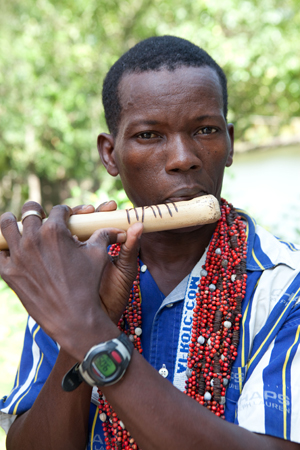
Another holiday that is centered on music is the Haitian Carnival season, which occurs several weeks leading up to Mardi Gras. Carnival is celebrated with street parades that include masked performers, floats, and musicians. The Carnival season festivities also bring music concerts and food stands featuring BBQ meats, snacks and beverages. The music played during Carnival can either be traditional Vodoun based, or it can also be more modern styles of music like jazz or even hip hop. Haitian bands often compete for fans during Carnival season, as the holiday allows them to play for wider audiences during the festivals.
Aside from religious holiday music, Haitians are known to also sing spiritual hymns and songs, performed by themselves and in groups, during everyday life. Music is the soul of the Haitian people. Groups of women waiting outside the pediatric ward at Hôpital Sacré Coeur can be heard singing religious hymns in unison. A spiritual melody rings from the voice of a man as he walks his donkey down the street. And groups of children burst out in song and dance, for no apparent reason other than singing together and being happy. Music strengthens the communities in Haiti and every Haitian is connected by the melodies.
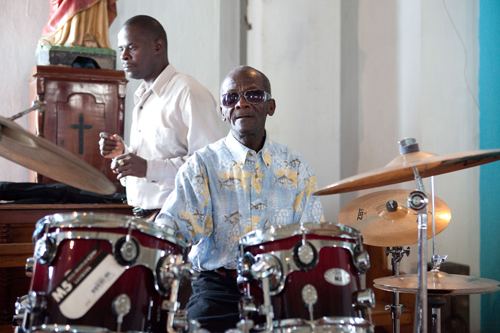 Political Music in Haiti
Political Music in Haiti
Music and religion are deeply rooted in Haitian society, and so is the idea of political freedom and justice. It makes sense that music and politics became intertwined in Haitian society as well, to help to evolve the political views of the Haitian people.
Politicians often use the religious holiday week of Rara in Haiti as a way to boost their political status in the community. Politicians have been known to commission musicians to create songs to elevate them and their campaigns, and these songs are featured during parades and festivals. Alternatively, some Rara music has been banned by the Haitian government because of the political issues the lyrics sometimes address.
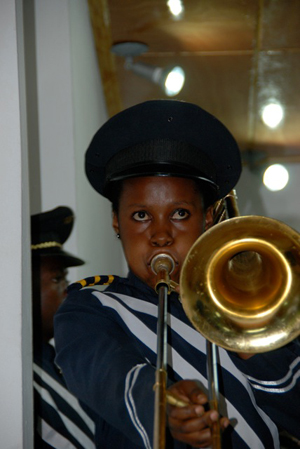 For instance, respected singer, actress, dancer, writer, philanthropist and activist Martha Jean Claude was jailed and exiled in the 1950’s for the controversial themes in her art.
For instance, respected singer, actress, dancer, writer, philanthropist and activist Martha Jean Claude was jailed and exiled in the 1950’s for the controversial themes in her art.
In the 1970’s political revolt against the Duvalier dictatorship created a form of music called Mizik rasin. Mizik rasin mixes reggae, rock, and funk with Rara and rural spiritual music. This time period in Haitian music history is known as the Samba movement, and it continued throughout the 1990’s, gaining in popularity among Haitians because of the music’s messages of political freedom, while simultaneously being shunned due to individual Samba musician’s tendencies toward domestic violence. Many Mizik rasin groups have also been suppressed by the Haitian government due to the music’s politically charged lyrics.
It is interesting to note that Mizik rasin musical groups can be found in other countries, inspired by the Samba Movement, such as the group Ayibobo, a mizik rasin band from NYC and Simbi, a band from Sweden, who are also known as the “Blue-Eyed Haitians.”
Modern and Popular Music in Haiti
In the 1940’s Haitian music could be described as a mix between jazz, blues, and African drumming.
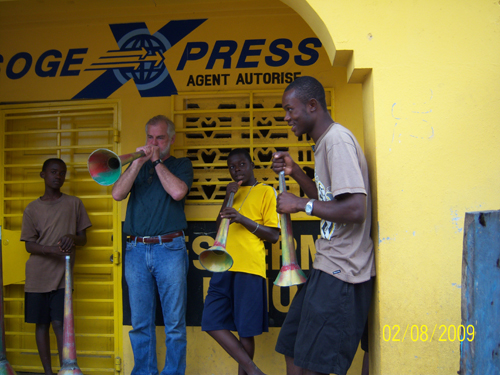 By the 1950’s the new, popular style of music was called Kompa music, coined by Haitian musicians Nemours Jean Baptiste and Weber Sicot. Kompa can be described as a mix of electric guitar, vocals, horns, and drumming, similar to meringue.
By the 1950’s the new, popular style of music was called Kompa music, coined by Haitian musicians Nemours Jean Baptiste and Weber Sicot. Kompa can be described as a mix of electric guitar, vocals, horns, and drumming, similar to meringue.
Kompa Music is still very popular in Haiti today, though it has evolved to include even more electronic instruments, and sometimes even replacing the real instruments completely, and western culture continues its influence, infusing Kompa music with soul, funk, and rap. Prior to his election as President, Martelly enjoyed Haitian rock star status as a Kompa singer.
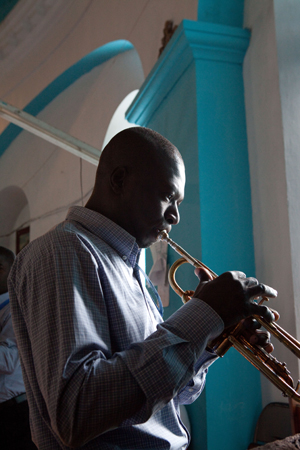 There aren’t many producers and record labels in Haiti, and musicians in Haiti rely on performing their music live during holiday parades and concerts around the country.
There aren’t many producers and record labels in Haiti, and musicians in Haiti rely on performing their music live during holiday parades and concerts around the country.
Though it is hard to rise to staredom as a musician in Haiti, there are a few famous Haitian musicians that come to mind. Among them is the Barikad Crew, a group of rappers from Port-au-Prince who are widely revered as the most popular group of the Rap Kreyol movement. Though three of their band members have died tragically since they rose to stardom in Haiti, the group remains together and continues bringing their form of Haitian rap to communities throughout the country.
Another famous rapper, songwriter, musician, producer, and politician from Haiti is Wyclef Jean. Born in Croix-des-Bouquets, Haiti, and raised in the United States from the age of nine, Wyclef is known worldwide for his talents and art. Performing and touring both on his own and with his band the Fugees, Wyclef has released many albums throughout the world while spreading the word about Haiti through his charity Yéle Haiti. Similar to other Haitian musicians, Wyclef is also passionate about politics and ran for Haitian presidency in 2010, though he was disqualified because he didn’t meet the proper residency requirements of the position.
Whether music is helping Haitians feel a sense of community, express religious beliefs, convey political ideals, or celebrate holidays, Haitians are full of the melodies of life. One can only imagine how the future will shape the musical styles of the Haitian people and culture, but one can be sure that music will always play a central role in the lifeblood of the nation.
Amanda MacFarland works for Creative Services at Andrew Associates and is a critical member of the CRUDEM Creative Team. Amanda’s and colleague Chris Rawson’s creative genius is seen from cover to cover of Bon Nouvèl!





